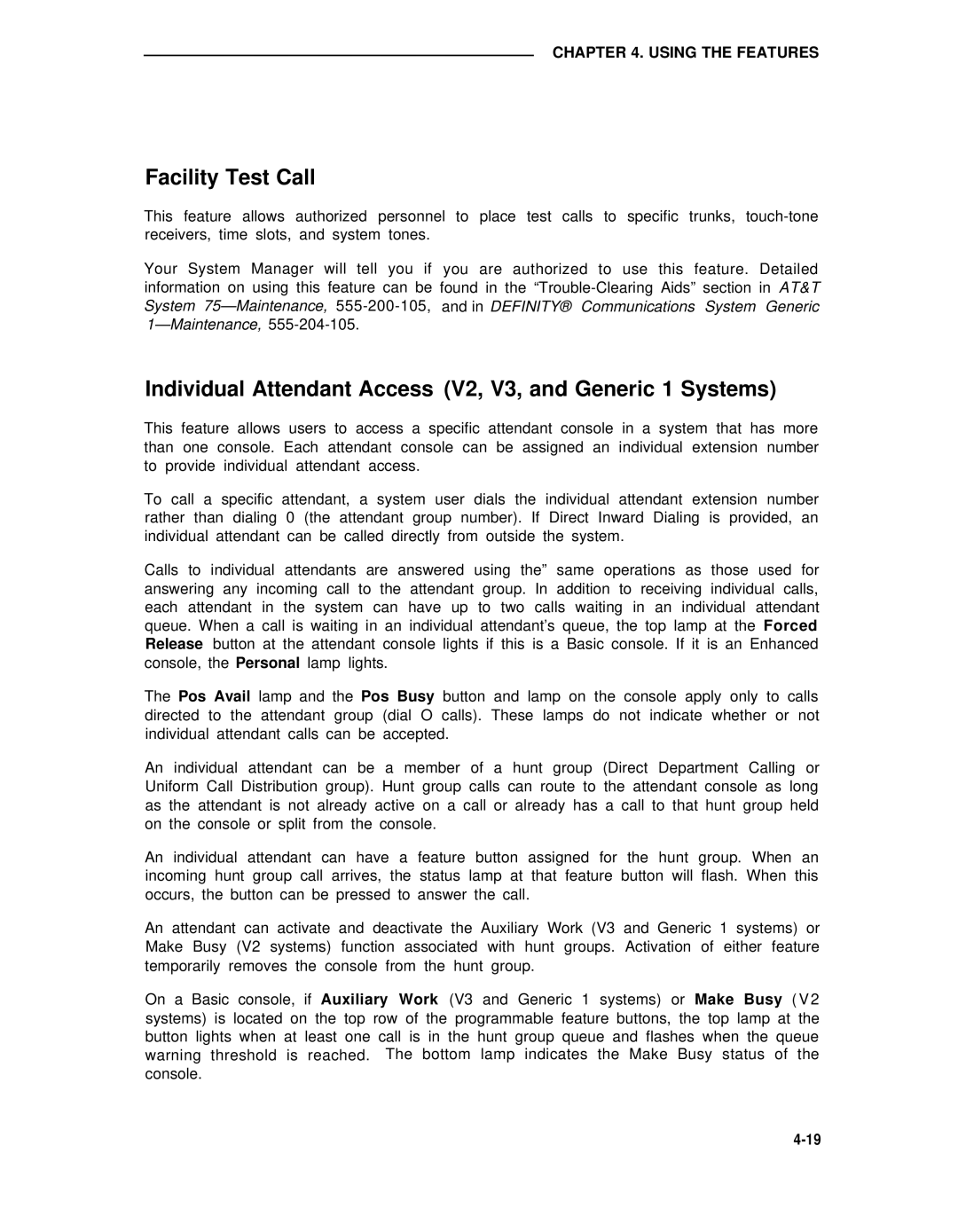CHAPTER 4. USING THE FEATURES
Facility Test Call
This feature allows authorized personnel to place test calls to specific trunks,
Your System Manager will tell you if you are authorized to use this feature. Detailed information on using this feature can be found in the
Individual Attendant Access (V2, V3, and Generic 1 Systems)
This feature allows users to access a specific attendant console in a system that has more than one console. Each attendant console can be assigned an individual extension number to provide individual attendant access.
To call a specific attendant, a system user dials the individual attendant extension number rather than dialing 0 (the attendant group number). If Direct Inward Dialing is provided, an individual attendant can be called directly from outside the system.
Calls to individual attendants are answered using the” same operations as those used for answering any incoming call to the attendant group. In addition to receiving individual calls, each attendant in the system can have up to two calls waiting in an individual attendant queue. When a call is waiting in an individual attendant’s queue, the top lamp at the Forced Release button at the attendant console lights if this is a Basic console. If it is an Enhanced console, the Personal lamp lights.
The Pos Avail lamp and the Pos Busy button and lamp on the console apply only to calls directed to the attendant group (dial O calls). These lamps do not indicate whether or not individual attendant calls can be accepted.
An individual attendant can be a member of a hunt group (Direct Department Calling or Uniform Call Distribution group). Hunt group calls can route to the attendant console as long as the attendant is not already active on a call or already has a call to that hunt group held on the console or split from the console.
An individual attendant can have a feature button assigned for the hunt group. When an incoming hunt group call arrives, the status lamp at that feature button will flash. When this occurs, the button can be pressed to answer the call.
An attendant can activate and deactivate the Auxiliary Work (V3 and Generic 1 systems) or Make Busy (V2 systems) function associated with hunt groups. Activation of either feature temporarily removes the console from the hunt group.
On a Basic console, if Auxiliary Work (V3 and Generic 1 systems) or Make Busy ( V 2 systems) is located on the top row of the programmable feature buttons, the top lamp at the button lights when at least one call is in the hunt group queue and flashes when the queue warning threshold is reached. The bottom lamp indicates the Make Busy status of the console.
